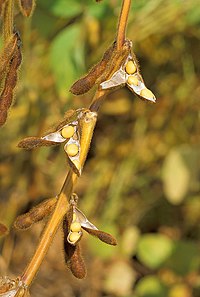
Photo from wikipedia
FuS. � ,�GaoJ.,�LiuY.,�ChenH.�(2011):�Isolation of Cronobacter spp . isolates from infant formulas and their survival in the production process of infant formula.�CzechJ.�FoodSci.,�29:�391-399. Overa�24-monthsurveillance, �threeCronobacterstrains, �NC041,�NC830,�andNC1006,�wereisolatedfrom �77�powder� infantformulas �(3.90%).�No Cronobacterwasdetectedinliquidmilk. �TheprevalenceofCronobacterintheprefinal� productandpackagedfinalproductwas… Click to show full abstract
FuS. � ,�GaoJ.,�LiuY.,�ChenH.�(2011):�Isolation of Cronobacter spp . isolates from infant formulas and their survival in the production process of infant formula.�CzechJ.�FoodSci.,�29:�391-399. Overa�24-monthsurveillance, �threeCronobacterstrains, �NC041,�NC830,�andNC1006,�wereisolatedfrom �77�powder� infantformulas �(3.90%).�No Cronobacterwasdetectedinliquidmilk. �TheprevalenceofCronobacterintheprefinal� productandpackagedfinalproductwas �3.70%�and �4.35%,�respectively. �TheisolatedCronobacterstrainsweresub - jectedtoseverallethalchallengesincludingthepH, �drying, �disinfectant, �andsimulatedinfantformulasmanufactur - ingprocess �(SIFMP).�Theresultsindicatedthattheyexhibitedunusualresistancetothedrystressanddisinfectant.� InSIFMP,�Cronobacterisolateswereinoculatedintothreepossiblecontaminationentrypointsinvolvingthestages� priortoheating, � drying, � andfilling, � respectively. � NoCronobactercouldsurvivetheheating. � However, � ahighlevel� (10 5� CFU/ml) �ofCronobacterwasdetectedinthesamplesaftertheinoculationatthedryingpoint. �Furthermore, �the� survivalofCronobacterwasobservedduringthestorageat �10°Cafter �7�days. �Theresultssupportthehypothesisthat� Cronobactercontaminationoccursatthestagesofdryingandfilling, �andhighlighttheneedtoimprovethedisinfect - ingmeasuresinthemanufacturingprocess.�
Journal Title: Czech Journal of Food Sciences
Year Published: 2018
Link to full text (if available)
Share on Social Media: Sign Up to like & get
recommendations!